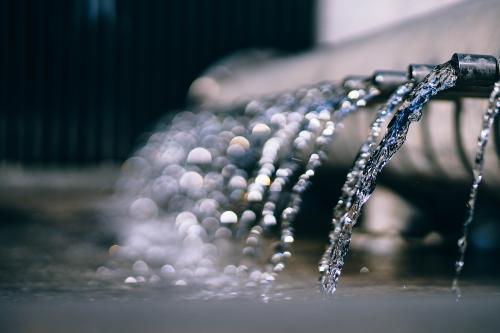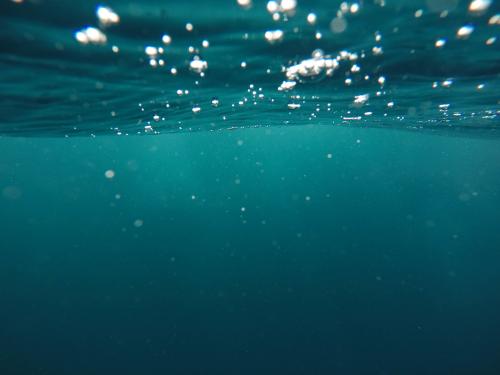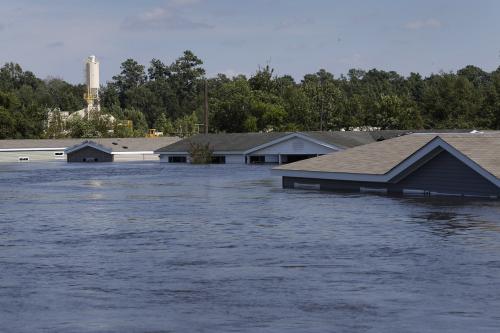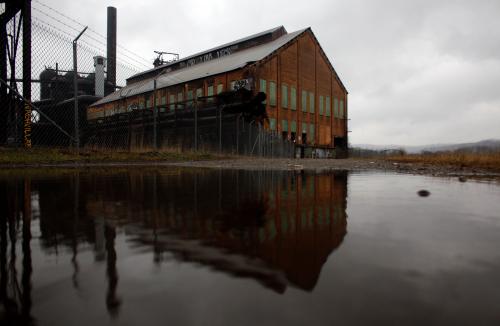On December 5, 2017, the author added a second reference note to the blog post.
This year’s record hurricane season has been a wake-up call when it comes to water infrastructure. It has also been a reminder of how the public sector plays a crucial role in promoting more resilient investments, managing runoff concerns, and preventing floods. Many communities, though, still lack the financial and technical capacity to support clean, safe, and reliable water infrastructure.
Devising new ways to plan and pay for water infrastructure upgrades – amidst increasingly unpredictable and costly storms – is not easy, especially given that federal action has been slow to materialize. In response, many regions are starting to look to each other to promote shared learning and drive resilient solutions before the next major storm hits.
While flood-prone regions along the Gulf Coast and Atlantic Seaboard are facing some of the biggest challenges – and forging new collaborations and strategies – there is one state that has a long track record on managing its stormwater needs, and that offers several useful models to consider: Minnesota. Despite its inland location – seemingly distant from the major storms that dominate national headlines – Minnesota has a variety of institutional frameworks, financial levers, and programmatic tools aimed at accelerating water infrastructure improvements.
First, as another Brookings analysis recently highlighted, Minnesota contains the most stormwater utilities in the U.S., 197 utilities out of 1,583 utilities nationally. These utilities help communities manage stormwater runoff concerns by directing additional financial and programmatic support – via new fees and grants, for instance – toward green infrastructure and other improvements. By establishing and supporting these utilities over time, the state has been able to operate from a position of greater technical and financial capacity, generating durable revenues to pay for water upgrades. These utilities are not isolated to big cities like Minneapolis and St. Paul; communities as small as Ashby and Chokio, each with populations under 500 people, are benefiting as well.
Minnesota has also pioneered many other revenue-generating programs and authorities aimed to protect and restore its water resources. The state’s numerous watershed districts are a notable example of these efforts, dating back well before the federal Clean Water Act was passed in 1972. More than sixty years ago, in 1955, the state had the foresight to enable communities to create watershed districts based on watershed boundaries, with the aim to protect community water resources like lakes and rivers. These watershed districts have broad powers including the right to levy property taxes. These funds are then applied to a wide range of projects that protect and enhance the water resources of the district.
By establishing and supporting these utilities over time, the Minnesota has been able to operate from a position of greater technical and financial capacity, generating durable revenues to pay for water upgrades
Of the 46[i] watershed districts in the state, there is a range in size, budget, and capacity, with 14 of the largest and most successful ones located in the Twin Cities metro region. Indeed, the Capitol Region Watershed District has won national accolades for managing regional water resources, including an innovative rainwater harvest project that helps provide water to a nearby outdoor sports arena for toilet flushing and turf irrigation. This project, like others throughout the state, is designed to decrease stormwater flows, thereby reducing flooding, erosion and stormwater pollution while also cutting back on municipal water supply demands.
Beyond stormwater utilities and watershed districts, Minnesota has also pursued more flexible financing channels at the state level. In 2006, concerned about pollution to several lakes and rivers, the Minnesota legislature passed the Clean Water Legacy Act [ii] which levied a sales tax of one-eighth of a percent, generating roughly $100 million per year for the state’s Clean Water Fund. Grants from this fund go toward water assessment, monitoring, and planning, as well as on-the-ground projects like rain gardens, buffer installation, and erosion control. Often, the grants go to municipalities or watershed districts to supplement their own funds, recognizing that their internal sources of revenue are not sufficient.
One of the more interesting applications of the funds is supporting the Master Water Stewards program. Taking their cue from master gardening programs, the Freshwater Society, a Minnesota-based non-profit, works with watershed districts to train volunteers in hydrology, stormwater management, water policy, social marketing, landscape assessment, and installation of clean-water practices. As part of the certification, each participant must complete a capstone stormwater capture/infiltration project and lead a community outreach event. To maintain certification, water stewards invest at least 25 volunteer hours per year on water-related community service and attend continuing education programs.
Minnesotans are putting their money where their values are. However, despite these multi-fronted investments, the state still faces a long list of water challenges, including ongoing pollution concerns and drinking water contamination. The key is that no single approach will solve these issues at once. It requires continued planning and financial support across a wide variety of communities, all with the aim to support a cleaner, more resilient “Land of 10,000 Lakes.”
There is not a single path toward developing policies and financial frameworks that drive resilient investments
While water advocates in other states may admire Minnesota’s success, there is not a single path toward developing policies and financial frameworks that drive resilient investments. Not every state needs to legislate watershed districts or levy a sales tax dedicated for water resources. The process matters more than the specific output. Minnesotans have a long history of thoughtful inquiry and collaborative decisionmaking that allow for setting long-range goals and the mechanisms for achieving them. Combine that with a deep appreciation for the state’s water resources (voters paying attention to water), and results are achievable.
The lesson for other states or municipalities is not to simply copy Minnesota’s programs, but to find and support the elected officials, public servants, community organizations, and private citizens who care. Together, they will create the path toward well-managed water resources that makes sense for their community.
[i] The author found references to 45, 46, or 47 watershed districts. On the oft-referenced map of watershed districts 45 districts were counted, while the state board of soil and water districts website references 46, and Wikipedia lists (by name) 47.
[ii] After posting on the Broadview website, I was contacted by Anna Henderson, Water Policy Adviser to Governor Dayton, who gently pointed out that the Clean Water Legacy Fund was approved, not by the legislature, but by taxpayers voting for a constitutional amendment. The Clean Water Legacy Act proceeded this and didn’t have funding for implementation. I should have known that because at the time of the vote I was living in Wisconsin where all the water advocates were wondering “how can we do what Minnesota just did?”!
The Brookings Institution is committed to quality, independence, and impact.
We are supported by a diverse array of funders. In line with our values and policies, each Brookings publication represents the sole views of its author(s).







Commentary
How the Land of 10,000 Lakes is planning and paying for cleaner water
November 16, 2017